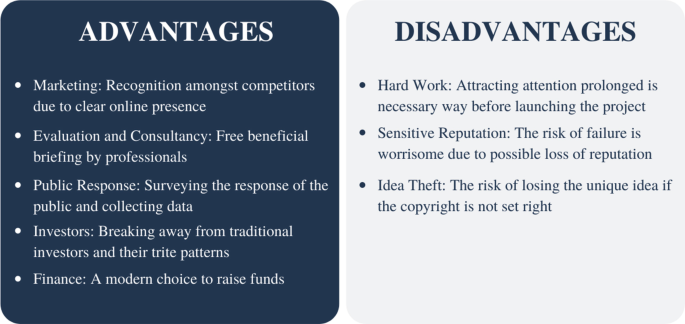Introduction OPAC
Ever wondered how libraries keep track of countless books and ensure you find what you’re looking for without breaking a sweat? The answer lies in a little acronym: OPAC. Short for Online Public Access Catalog, OPAC is the digital backbone of library systems, quietly revolutionizing the way we search for books, manage collections, and navigate the vast seas of knowledge. Let’s dive into the world of OPAC and uncover its magic!
Discover the fascinating world of OPAC, the unsung hero of modern libraries. Learn how this system revolutionizes book searches and library management, ensuring a seamless user experience.
OPAC, or Online Public Access Catalog, is a digital library system that allows users to search for and access library materials such as books, journals, and other resources. Here are the key points about OPAC:
OPAC Origins and History:
OPAC was developed in the 1960s through the work of Frederick Kilgour and Henriette Davidson Avram. It was first introduced to patrons at Ohio State University in 1975 as a way to replace the traditional card catalog system.
Early OPAC systems were difficult to use, but modern OPAC designs have become more user-friendly with the rise of the internet and online search engines. Purpose and Features of OPAC: The main purpose of OPAC is to allow library users to search for and locate materials without the assistance of a librarian.
Key features of OPAC include:
- Searching by title, author, subject, keyword, and other criteria
- Viewing availability and location of materials
- Placing holds or requests for items
- Accessing personal account features like reading lists
- Integrating with the library’s circulation system
What is OPAC?
The Basics of OPAC
OPAC, or Online Public Access Catalog, is an electronic database that provides library patrons with access to the catalog of books, journals, multimedia, and other resources available in a library. Gone are the days of flipping through dusty card catalogs; OPAC has brought library search systems into the digital age.
A Brief History
Believe it or not, OPACs have been around since the 1980s. Initially, they were clunky and limited in functionality. However, as technology advanced, so did OPACs. Today, they’re sophisticated systems that offer a user-friendly interface, robust search capabilities, and a wealth of information at your fingertips.
Why is OPAC Important?
Revolutionizing Library Searches
OPACs have completely transformed how we search for books. With a few keystrokes, you can find exactly what you’re looking for, whether it’s the latest bestseller, a rare manuscript, or a specific journal article.
- Efficiency: No more wandering aimlessly through aisles or sifting through paper catalogs.
- Accessibility: Access the catalog from anywhere with an internet connection.
- User-Friendly: Intuitive interfaces make searching a breeze for users of all ages.
Enhancing Library Management
For librarians, OPACs are a godsend. They streamline the management of library collections, tracking loans, returns, and even acquisitions.
- Inventory Control: Keep tabs on every item in the collection.
- Circulation Management: Efficiently manage check-outs and check-ins.
- Acquisition Tracking: Simplify the process of adding new materials to the library.
Key Features of Modern OPACs
Advanced Search Capabilities
Modern OPACs offer a variety of search options to help you find what you need:
- Basic Search: Search by title, author, or keyword.
- Advanced Search: Use filters like publication date, format, language, and more.
- Boolean Search: Combine terms with AND, OR, and NOT for precise results.
User Accounts
Many OPACs allow users to create accounts, providing a personalized library experience:
- Saved Searches: Keep track of your search history and favorite queries.
- Hold Requests: Place holds on items currently checked out.
- Renewals: Easily renew borrowed items online.
Integration with Digital Resources
OPACs aren’t just for physical books anymore. They integrate seamlessly with digital collections:
- E-books and Audiobooks: Access digital content directly from the catalog.
- Databases and Journals: Link to online databases and journal articles.
- Multimedia: Find DVDs, CDs, and other multimedia resources.
How to Use an OPAC Effectively
Tips for Efficient Searching
Want to become an OPAC pro? Here are some tips to get you started:
- Use Specific Keywords: The more specific your search terms, the better your results.
- Leverage Filters: Narrow down your search with filters like format, language, and publication date.
- Check Availability: Make sure the item is available or place a hold if it’s checked out.
Making the Most of Your User Account
- Create Alerts: Set up alerts for new arrivals that match your interests.
- Track Due Dates: Keep an eye on due dates to avoid late fees.
- Request Interlibrary Loans: If your library doesn’t have an item, request it from another library.
Enter the Next Generation: Evolution into Discovery Systems
In response to user dissatisfaction, libraries embraced next-generation catalogs, also known as discovery systems. These systems employ cutting-edge search algorithms such as relevancy ranking and faceted searching to deliver more precise results. Features like user tagging and reviews enhance user engagement, bridging the gap between library catalogs and modern search expectations.
Key Features of Next-Generation Catalogs
Next-generation catalogs differentiate themselves by their ability to integrate seamlessly with existing library management systems (ILS) while offering enhanced functionalities:
- Relevancy Ranking: Prioritizes search results based on user queries, improving discoverability.
- Faceted Search: Allows users to refine searches by multiple criteria, enhancing precision.
- User Interaction: Enables user-generated content such as reviews and tags, fostering community engagement.
- Integration with ILS: Synchronizes data across platforms, ensuring real-time availability of library resources.
OPAC Advantages and Disadvantages:

Advantages:
- User-friendly and easy to use
- Remotely accessible from anywhere
- Easily updated with new materials
- Enables resource sharing through union catalogs
Disadvantages:
- May limit in-person library visits
- Inefficient searches can return too many results
- Subject descriptions may be biased
- Power outages or internet issues can disrupt access
- Privacy concerns from user data collection
Modern OPAC Systems
- Cloud-Based Systems: Modern OPAC systems are cloud-based, making them more accessible and easier to use than their early counterparts.
- Integration with Other Systems: OPACs often connect libraries across the country and worldwide, facilitating resource sharing and collaboration.
FAQs About OPAC
What Does OPAC Stand For?
OPAC stands for Online Public Access Catalog. It’s a digital system that allows library users to search and access the library’s collection.
How Do I Access an OPAC?
Most libraries provide access to their OPAC through their website. You can usually find a link labeled “Catalog” or “Search” on the library’s homepage.
Can I Use OPAC from Home?
Absolutely! One of the best features of OPACs is their remote accessibility. As long as you have an internet connection, you can search the library catalog from anywhere.
Are OPACs User-Friendly?
Yes, modern OPACs are designed to be intuitive and easy to use. They often include helpful features like search suggestions, filters, and user accounts to enhance the experience.
What Should I Do If I Can’t Find What I’m Looking For?
If your search doesn’t yield results, try using different keywords or checking your spelling. If you’re still having trouble, don’t hesitate to ask a librarian for assistance. They’re there to help!
Conclusion
OPACs have quietly become the unsung heroes of the library world, making the search for knowledge more accessible, efficient, and enjoyable than ever before. Whether you’re a student on a research mission, a book lover hunting for your next great read, or a librarian managing a vast collection, OPACs are indispensable tools. So next time you’re on the hunt for information, remember to give a nod to the humble OPAC—your gateway to the treasures of the library.
With its user-friendly interface, advanced search capabilities, and seamless integration with digital resources, OPAC truly is the hidden gem of modern library systems. Happy searching!








